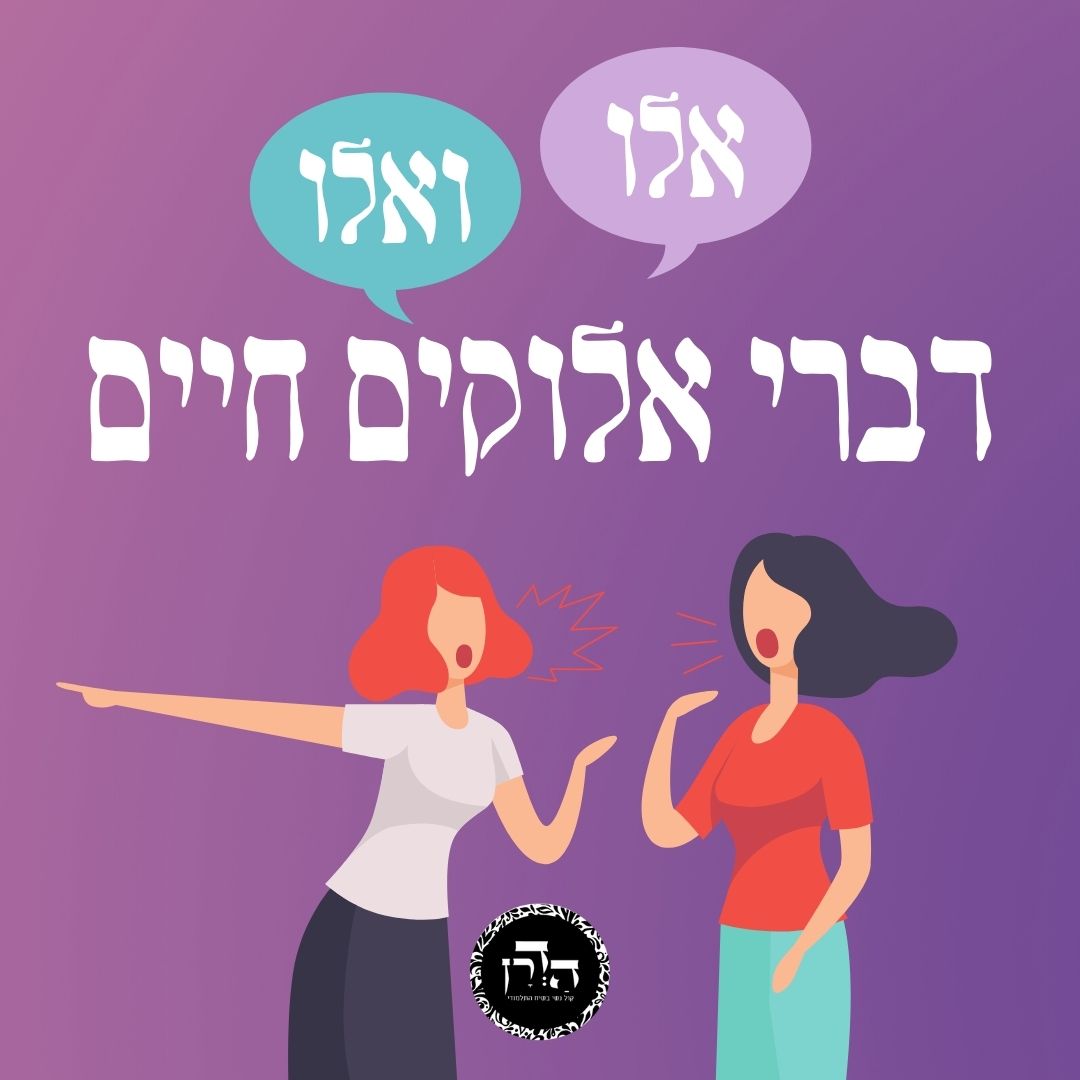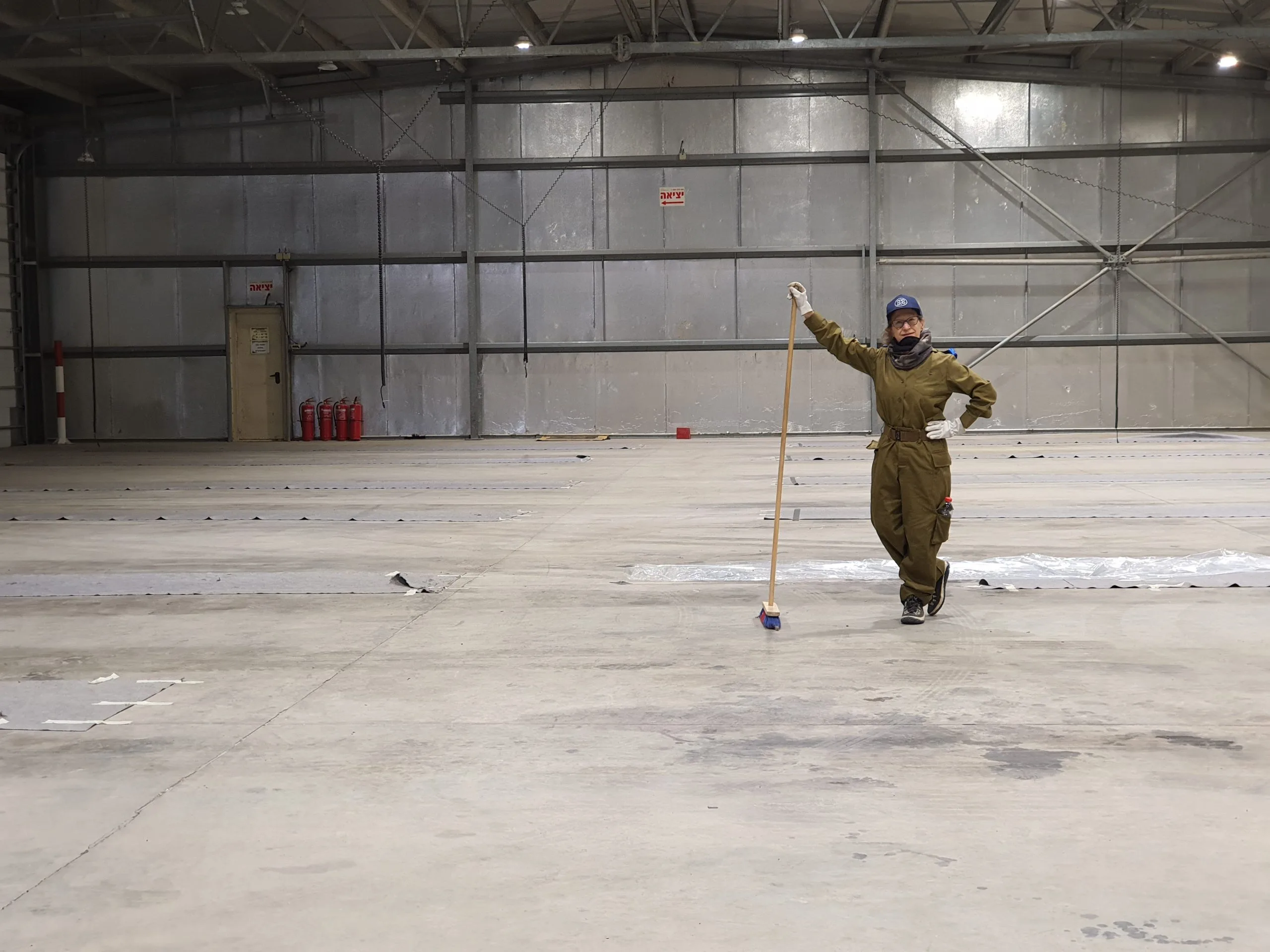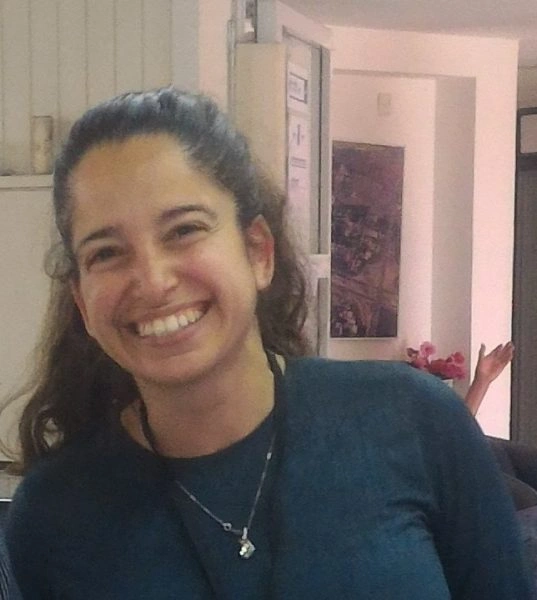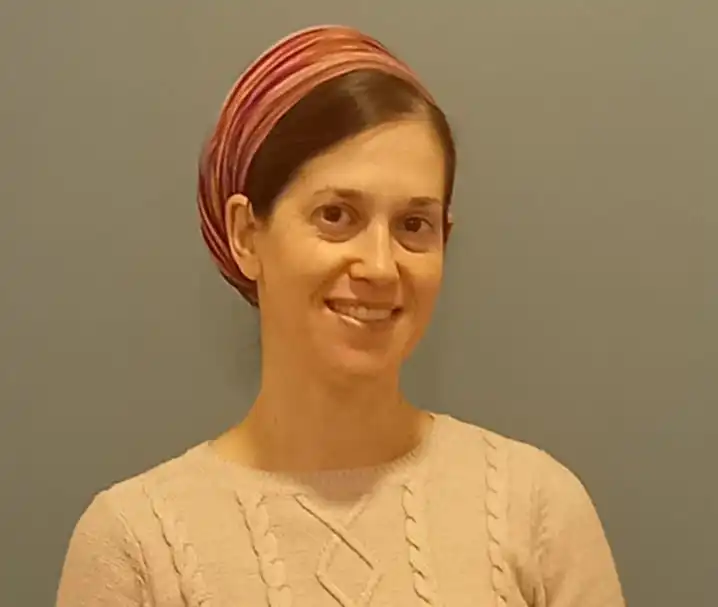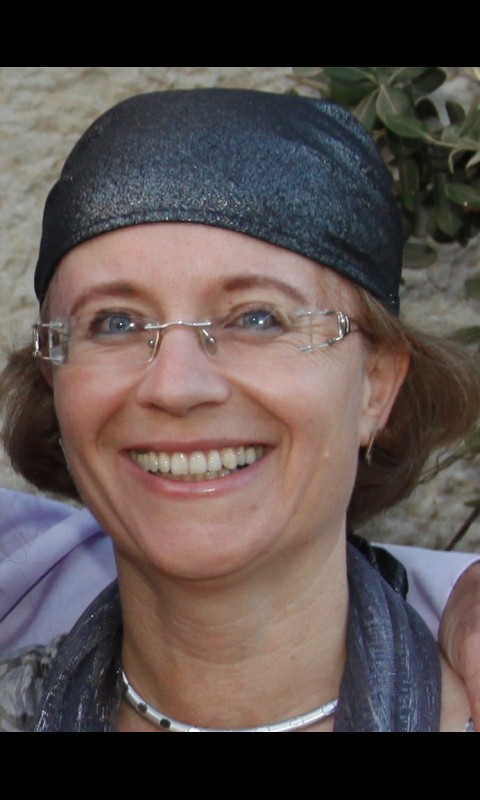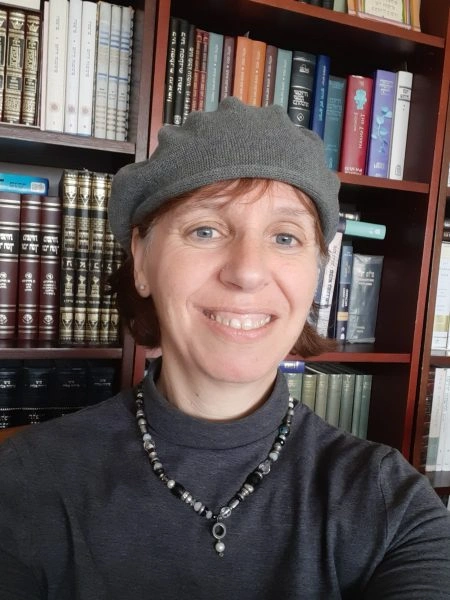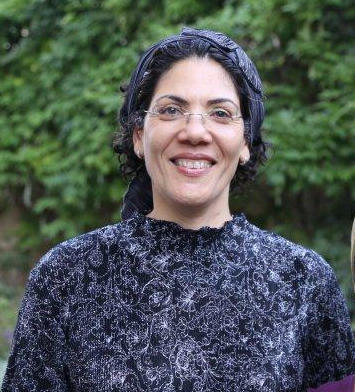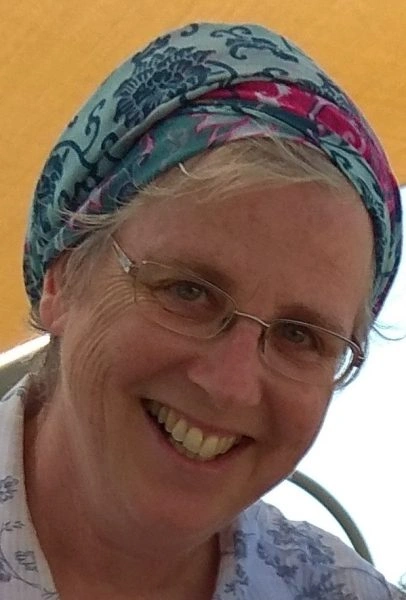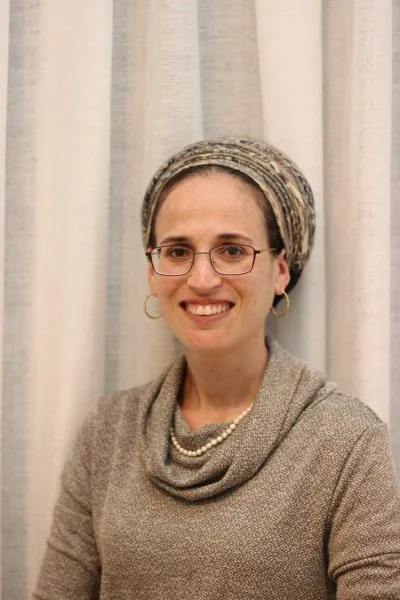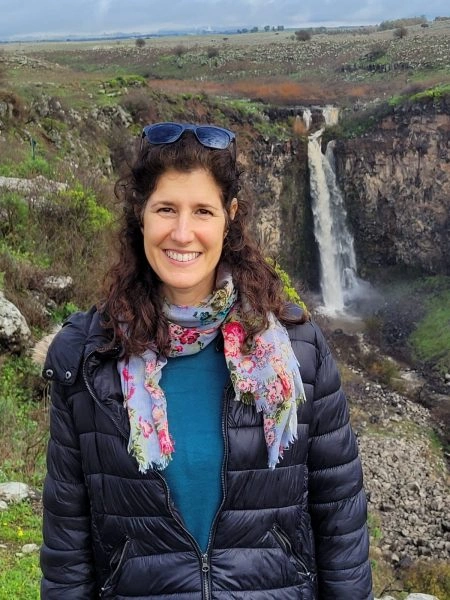עירובין יג
רַבִּי עֲקִיבָא אוֹמֵר: עַל זֶה וְעַל זֶה נֶחְלְקוּ כּוּ׳.
The mishna relates that a student recited a halakha before Rabbi Akiva, and he did not accept the student’s version of the dispute between Beit Shammai and Beit Hillel, as Rabbi Akiva said: They disagree about this, an alleyway less than four cubits wide, and about that, an alleyway more than four cubits wide.
רַבִּי עֲקִיבָא הַיְינוּ תַּנָּא קַמָּא! אִיכָּא בֵּינַיְיהוּ דְּרַב אַחְלַי, וְאִיתֵּימָא רַב יְחִיאֵל. וְלָא מְסַיְּימִי.
The Gemara asks: In that case, the opinion of Rabbi Akiva is identical with the opinion first tanna of the mishna, as he too holds that Beit Shammai and Beit Hillel disagree in all cases, irrespective of the width of the alleyway. The Gemara answers: There is a practical difference between them with regard to the halakha stated by Rav Aḥlai, and some say it was Rav Yeḥiel, that an alleyway less than four handbreadths wide requires no corrective action. However, their respective opinions are not defined; which tanna accepts the view of Rav Aḥlai and which tanna rejects it cannot be determined.
תַּנְיָא, אָמַר רַבִּי עֲקִיבָא: לָא אָמַר רַבִּי יִשְׁמָעֵאל דָּבָר זֶה, אֶלָּא אוֹתוֹ תַּלְמִיד אָמַר דָּבָר זֶה, וַהֲלָכָה כְּאוֹתוֹ תַּלְמִיד.
It was taught in a baraita that Rabbi Akiva said: Rabbi Yishmael did not state this matter, as it is unlikely that Rabbi Yishmael would err in this manner; rather, it was that disciple who stated that matter on his own, and the halakha is in accordance with the opinion of that disciple.
הָא גּוּפַהּ קַשְׁיָא: אָמְרַתְּ ״לָא אָמַר רַבִּי יִשְׁמָעֵאל דָּבָר זֶה״ — אַלְמָא לֵית הִלְכְתָא כְּווֹתֵיהּ, וַהֲדַר אָמְרַתְּ: ״הֲלָכָה כְּאוֹתוֹ תַּלְמִיד״!
With regard to that baraita the Gemara asks: This baraita itself is difficult. You stated initially that Rabbi Yishmael did not state this matter; apparently the halakha is not in accordance with the opinion of the disciple. And then you said: The halakha is in accordance with the opinion of that disciple.
אָמַר רַב יְהוּדָה אָמַר שְׁמוּאֵל: לֹא אֲמָרָהּ רַבִּי עֲקִיבָא אֶלָּא לְחַדֵּד בָּהּ הַתַּלְמִידִים.
Rav Yehuda said that Shmuel said: Rabbi Akiva said that the halakha is in accordance with that disciple only to sharpen the minds of his students with his statement. Seeking to encourage his students to suggest novel opinions, he praised that disciple before them but did not actually rule in accordance with the disciple’s opinion.
וְרַב נַחְמָן בַּר יִצְחָק אָמַר: נִרְאִין אִיתְּמַר.
And Rav Naḥman bar Yitzḥak said, in another attempt to resolve the contradiction: The statement of the disciple appears to be reasonable was stated. Although Rabbi Yishmael himself did not make that statement, the statement of the disciple is reasonable.
אָמַר רַבִּי יְהוֹשֻׁעַ בֶּן לֵוִי: כׇּל מָקוֹם שֶׁאַתָּה מוֹצֵא ״מִשּׁוּם רַבִּי יִשְׁמָעֵאל אָמַר תַּלְמִיד אֶחָד לִפְנֵי רַבִּי עֲקִיבָא״ — אֵינוֹ אֶלָּא רַבִּי מֵאִיר, שֶׁשִּׁימֵּשׁ אֶת רַבִּי יִשְׁמָעֵאל וְאֶת רַבִּי עֲקִיבָא.
Rabbi Yehoshua ben Levi said: Anywhere that you find a statement introduced with: A certain disciple said before Rabbi Akiva in the name of Rabbi Yishmael, it is none other than Rabbi Meir, who was the student who served both Rabbi Yishmael and Rabbi Akiva.
דְּתַנְיָא, אָמַר רַבִּי מֵאִיר: כְּשֶׁהָיִיתִי אֵצֶל רַבִּי יִשְׁמָעֵאל הָיִיתִי מֵטִיל קַנְקַנְתּוֹם לְתוֹךְ הַדְּיוֹ, וְלֹא אָמַר לִי דָּבָר. כְּשֶׁבָּאתִי אֵצֶל רַבִּי עֲקִיבָא, אֲסָרָהּ עָלַי.
As it was taught in a baraita that Rabbi Meir said: When I was a student with Rabbi Yishmael, I used to put iron sulfate [kankantom] into the ink with which I wrote Torah scrolls, and he did not say anything to me. When I came to study with Rabbi Akiva, he prohibited me from doing so.
אִינִי?! וְהָאָמַר רַב יְהוּדָה אָמַר שְׁמוּאֵל מִשּׁוּם רַבִּי מֵאִיר: כְּשֶׁהָיִיתִי לוֹמֵד אֵצֶל רַבִּי עֲקִיבָא הָיִיתִי מֵטִיל קַנְקַנְתּוֹם לְתוֹךְ הַדְּיוֹ, וְלֹא אָמַר לִי דָּבָר. וּכְשֶׁבָּאתִי אֵצֶל רַבִּי יִשְׁמָעֵאל, אָמַר לִי: בְּנִי, מָה מְלַאכְתֶּךָ? אָמַרְתִּי לוֹ: לַבְלָר אֲנִי. אָמַר לִי: בְּנִי, הֱוֵי זָהִיר בִּמְלַאכְתֶּךָ, שֶׁמְּלַאכְתְּךָ מְלֶאכֶת שָׁמַיִם הִיא, שֶׁמָּא אַתָּה מְחַסֵּר אוֹת אַחַת אוֹ מְיַיתֵּר אוֹת אַחַת — נִמְצֵאתָ מַחֲרִיב אֶת כָּל הָעוֹלָם כּוּלּוֹ.
The Gemara challenges this statement: Is that so? Didn’t Rav Yehuda say that Shmuel said in the name of Rabbi Meir: When I studied with Rabbi Akiva as his disciple, I used to put iron sulfate into the ink, and he did not say anything to me. But when I came to study with Rabbi Yishmael, he said to me: My son, what is your vocation? I replied: I am a scribe [lavlar] who writes Torah scrolls. He said to me: My son, be careful in your vocation, as your vocation is heavenly service, and care must be taken lest you omit a single letter or add a single letter out of place, and you will end up destroying the whole world in its entirety. Addition or omission of a single letter can change the meaning from truth [emet] to death [met].
אָמַרְתִּי לוֹ: דָּבָר אֶחָד יֵשׁ לִי וְ׳קַנְקַנְתּוֹם׳ שְׁמוֹ, שֶׁאֲנִי מֵטִיל לְתוֹךְ הַדְּיוֹ. אָמַר לִי: וְכִי מְטִילִין קַנְקַנְתּוֹם לְתוֹךְ הַדְּיוֹ? וַהֲלֹא אָמְרָה תּוֹרָה: ״וְכָתַב וּמָחָה״, כְּתָב שֶׁיָּכוֹל לִמָּחוֹת.
I said to him: I have one substance called iron sulfate, which I place into the ink, and therefore I am not concerned. He said to me: May one place iron sulfate into the ink? Didn’t the Torah state with regard to sota: “And the priest shall write these curses in a book, and he shall blot them out into the water of bitterness” (Numbers 5:23)? The Torah requires writing that can be blotted out.
מַאי קָאֲמַר לֵיהּ, וּמַאי קָא מְהַדַּר לֵיהּ?
The Gemara clarifies elements of the conversation: What is Rabbi Yishmael saying to Rabbi Meir, and what is he answering him? Rabbi Meir’s response with regard to iron sulfate does not seem to address Rabbi Yishmael’s comments with regard to omissions and additions.
הָכִי קָאֲמַר לֵיהּ: לָא מִיבַּעְיָא בַּחֲסֵירוֹת וּבִיתֵירוֹת [דְּלָא טָעֵינָא] — דְּבָקִי אֲנָא, אֶלָּא אֲפִילּוּ מֵיחַשׁ לִזְבוּב נָמֵי, דִּילְמָא אָתֵי וְיָתֵיב אַתָּגֵיהּ דְּדָלֶת וּמָחֵיק לֵיהּ וּמְשַׁוֵּי לֵיהּ רֵישׁ — דָּבָר אֶחָד יֵשׁ לִי וְקַנְקַנְתּוֹם שְׁמוֹ שֶׁאֲנִי מֵטִיל לְתוֹךְ הַדְּיוֹ.
The Gemara explains that this is what Rabbi Meir is saying to Rabbi Yishmael: There is no need to mention defective and plene words, as I am an expert; however, even with regard to the concern that a fly might come and land on the crown of the letter dalet and blot it out and render it a reish, thereby changing the meaning of the word, I am not concerned, as I have a substance called iron sulfate that I place into the ink so that it will not be erased.
קַשְׁיָא שִׁימּוּשׁ אַשִּׁימּוּשׁ, קַשְׁיָא אֲסָרָהּ אַאֲסָרָהּ.
Nevertheless, there is a difficulty between service and service, as one source states that Rabbi Meir initially served Rabbi Akiva, whereas the other source states that he served Rabbi Yishmael first. There is a difficulty between the words he prohibited it in the baraita, which is referring to Rabbi Akiva, and he prohibited it in the statement of Rav Yehuda, which is referring to Rabbi Yishmael.
בִּשְׁלָמָא שִׁימּוּשׁ אַשִּׁימּוּשׁ לָא קַשְׁיָא: מֵעִיקָּרָא אֲתָא לְקַמֵּיהּ דְּרַבִּי עֲקִיבָא, וּמִדְּלָא מָצֵי לְמֵיקַם אַלִּיבֵּיהּ — אֲתָא לְקַמֵּיהּ דְּרַבִּי יִשְׁמָעֵאל, וּגְמַר גְּמָרָא, וַהֲדַר אֲתָא לְקַמֵּיהּ דְּרַבִּי עֲקִיבָא, וּסְבַר סְבָרָא.
The Gemara comments: Granted, there is no difficulty between the accounts in the two sources with regard to service and service, as it can be suggested as follows: Rabbi Meir initially came to study before Rabbi Akiva, and since he was unable to comprehend the teachings in accordance with his opinion, he came before Rabbi Yishmael and studied the tradition, and again came before Rabbi Akiva and studied logical analysis. After studying the basic principles from Rabbi Yishmael, he was able to understand the more complex teachings of Rabbi Akiva.
אֶלָּא אֲסָרָהּ אַאֲסָרָהּ קַשְׁיָא! קַשְׁיָא.
Having reconciled the first difficulty, the Gemara continues: However, the difficulty with regard to whether Rabbi Akiva prohibited iron sulfate or Rabbi Yishmael prohibited it remains difficult. The Gemara notes: It indeed remains difficult; no answer was found.
תַּנְיָא רַבִּי יְהוּדָה אוֹמֵר, רַבִּי מֵאִיר הָיָה אוֹמֵר: לַכֹּל מְטִילִין קַנְקַנְתּוֹם לְתוֹךְ הַדְּיוֹ, חוּץ מִפָּרָשַׁת סוֹטָה. וְרַבִּי יַעֲקֹב אוֹמֵר מִשְּׁמוֹ: חוּץ מִפָּרָשַׁת סוֹטָה שֶׁבַּמִּקְדָּשׁ.
The Gemara continues the discussion of iron sulfate. It was taught in a baraita: Rabbi Yehuda says that Rabbi Meir would say: One may place iron sulfate into the ink that is to be used for all sacred writings, except for the writing of the Torah passage with regard to a sota, as it must be possible to erase that writing. Rabbi Ya’akov says in his name: Except for the writing of the Torah passage with regard to a sota used in the Temple in the ordeal to determine the guilt or innocence of the wife suspected of adultery.
מַאי בֵּינַיְיהוּ? אָמַר רַב יִרְמְיָה: לִמְחוֹק לָהּ מִן הַתּוֹרָה אִיכָּא בֵּינַיְיהוּ.
The Gemara asks: What is the difference between their opinions, i.e., what is their point of dispute? The Gemara answers: Rav Yirmeya said: The difference between their opinions is whether it is permissible to erase the passage of a sota from a Torah scroll. The tanna’im of the baraita disagree whether or not a section taken from a Torah scroll may be used for this purpose, or whether a special scroll must be written for use in the ordeal of the sota.
וְהָנֵי תַנָּאֵי כִי הָנֵי תַנָּאֵי, דְּתַנְיָא: אֵין מְגִילָּתָהּ כְּשֵׁירָה לְהַשְׁקוֹת בָּהּ סוֹטָה אַחֶרֶת. רַבִּי אַחַי בַּר יֹאשִׁיָּה אָמַר: מְגִילָּתָהּ כְּשֵׁירָה לְהַשְׁקוֹת בָּהּ סוֹטָה אַחֶרֶת.
And those tanna’im disagree in the same dispute as these tanna’im, as it was taught in a baraita: A scroll that was written for one woman suspected of infidelity but was not used, her scroll is not fit to prepare the water to give to another sota to drink. However, Rabbi Aḥai bar Yoshiya said: Her scroll is fit to be used to prepare the water to give another sota to drink. The legal status of a Torah scroll, which is not written for a particular sota, should be the same.
אָמַר רַב פָּפָּא: דִּילְמָא לָא הִיא. עַד כָּאן לָא קָאָמַר תַּנָּא קַמָּא הָתָם — אֶלָּא כֵּיוָן דְּאִינְּתִיק לְשׁוּם רָחֵל תּוּ לָא הָדְרָא מִינַּתְקָא לְשׁוּם לֵאָה, אֲבָל גַּבֵּי תּוֹרָה דִּסְתָמָא מִיכַּתְבָא, הָכִי נָמֵי דְּמָחֲקִינַן.
Rav Pappa said: Perhaps that is not the case, as the two circumstances are not comparable. The first tanna of the baraita stated his opinion that one woman’s scroll may not be used for another woman only there; since it had originally been designated in the name of one woman, e.g., Rachel, it cannot then be designated in the name of another woman, e.g., Leah. However, in the case of a Torah scroll, which is written with no particular person in mind, he too may say that we may erase it to be used for another woman, and it is not disqualified because it was not written in her name.
אָמַר רַב נַחְמָן בַּר יִצְחָק, דִּילְמָא לָא הִיא: עַד כָּאן לָא קָאָמַר רַבִּי אַחַי בַּר יֹאשִׁיָּה הָתָם — אֶלָּא דְּאִיכְּתִיב מִיהַת לְשׁוּם סוֹטָה בָּעוֹלָם, אֲבָל גַּבֵּי תּוֹרָה, דִּלְהִתְלַמֵּד כְּתִיבָא — הָכִי נָמֵי דְּלָא מֵחַקְיָנָן.
Furthermore, Rav Naḥman bar Yitzḥak said in another attempt to resolve the matter: Perhaps it is not so, as an additional distinction exists between the two cases: Rabbi Aḥai bar Yoshiya stated his opinion that the first woman’s scroll may be used for another woman only there because at least, in that case, it was written for a particular sota in the world. However, in the case of a Torah scroll, which was written for study, he too would agree that we do not erase it.
וְלֵית לֵיהּ לְרַבִּי אַחַי בַּר יֹאשִׁיָּה הָא דִּתְנַן: כָּתַב [גֵּט] לְגָרֵשׁ אֶת אִשְׁתּוֹ,
The Gemara asks: And does Rabbi Aḥai bar Yoshiya not hold in accordance with that which we learned in a mishna: If one wrote a bill of divorce to divorce his wife,
וְנִמְלַךְ וּמְצָאוֹ בֶּן עִירוֹ וְאָמַר: שִׁמְךָ כִּשְׁמִי וְשֵׁם אִשְׁתְּךָ כְּשֵׁם אִשְׁתִּי — פָּסוּל לְגָרֵשׁ בּוֹ!
but later reconsidered and did not divorce her, and a resident of his city found him and said: Your name is the same as my name, and your wife’s name is the same as my wife’s name, and we reside in the same town; give me the bill of divorce, and I will use it to divorce my wife, then this document is invalid to divorce with it? Apparently, a man may not divorce his wife with a bill of divorce written for another woman, and the same should apply to the scroll of a sota.
הָכִי הַשְׁתָּא? הָתָם ״וְכָתַב לָהּ״ כְּתִיב — בָּעִינַן כְּתִיבָה לִשְׁמָהּ, הָכָא ״וְעָשָׂה לָהּ״ כְּתִיב — בָּעִינַן עֲשִׂיָּיה לִשְׁמָהּ, עֲשִׂיָּיה דִידַהּ מְחִיקָה הִיא.
The Gemara rejects this argument: How can you compare the two cases? There, with regard to a bill of divorce, it is written: “And he shall write for her” (Deuteronomy 24:1), and therefore we require writing it in her name, specifically for her; whereas here, with regard to a sota, it is written: “And he shall perform with her all this ritual” (Numbers 5:30), and therefore we require performance in her name. In her case, the performance is erasure; however, writing of the scroll need not be performed specifically for her.
אָמַר רַבִּי אַחָא בַּר חֲנִינָא: גָּלוּי וְיָדוּעַ לִפְנֵי מִי שֶׁאָמַר וְהָיָה הָעוֹלָם שֶׁאֵין בְּדוֹרוֹ שֶׁל רַבִּי מֵאִיר כְּמוֹתוֹ, וּמִפְּנֵי מָה לֹא קָבְעוּ הֲלָכָה כְּמוֹתוֹ? שֶׁלֹּא יָכְלוּ חֲבֵירָיו לַעֲמוֹד עַל סוֹף דַּעְתּוֹ. שֶׁהוּא אוֹמֵר עַל טָמֵא טָהוֹר וּמַרְאֶה לוֹ פָּנִים, עַל טָהוֹר טָמֵא וּמַרְאֶה לוֹ פָּנִים.
On the topic of Rabbi Meir and his Torah study, the Gemara cites an additional statement. Rabbi Aḥa bar Ḥanina said: It is revealed and known before the One Who spoke and the world came into being that in the generation of Rabbi Meir there was no one of the Sages who is his equal. Why then didn’t the Sages establish the halakha in accordance with his opinion? It is because his colleagues were unable to ascertain the profundity of his opinion. He was so brilliant that he could present a cogent argument for any position, even if it was not consistent with the prevalent halakha. As he would state with regard to a ritually impure item that it is pure, and display justification for that ruling, and likewise he would state with regard to a ritually pure item that it is impure, and display justification for that ruling. The Sages were unable to distinguish between the statements that were halakha and those that were not.
תָּנָא: לֹא רַבִּי מֵאִיר שְׁמוֹ אֶלָּא רַבִּי נְהוֹרַאי שְׁמוֹ, וְלָמָּה נִקְרָא שְׁמוֹ רַבִּי מֵאִיר? שֶׁהוּא מֵאִיר עֵינֵי חֲכָמִים בַּהֲלָכָה. וְלֹא נְהוֹרַאי שְׁמוֹ אֶלָּא רַבִּי נְחֶמְיָה שְׁמוֹ, וְאָמְרִי לַהּ רַבִּי אֶלְעָזָר בֶּן עֲרָךְ שְׁמוֹ, וְלָמָּה נִקְרָא שְׁמוֹ נְהוֹרַאי? שֶׁמַּנְהִיר עֵינֵי חֲכָמִים בַּהֲלָכָה.
It was taught in a baraita: Rabbi Meir was not his name; rather, Rabbi Nehorai was his name. And why was he called by the name Rabbi Meir? It was because he illuminates [meir] the eyes of the Sages in matters of the halakha. And Rabbi Nehorai was not the name of the tanna known by that name; rather, Rabbi Neḥemya was his name, and some say: Rabbi Elazar ben Arakh was his name. And why was he called by the name Rabbi Nehorai? It is because he enlightens [manhir] the eyes of the Sages in matters of the halakha.
אָמַר רַבִּי: הַאי דִּמְחַדַּדְנָא מֵחַבְרַאי דַּחֲזִיתֵיהּ לְרַבִּי מֵאִיר מֵאֲחוֹרֵיהּ, וְאִילּוּ חֲזִיתֵיהּ מִקַּמֵּיהּ הֲוָה מְחַדַּדְנָא טְפֵי — דִּכְתִיב: ״וְהָיוּ עֵינֶיךָ רוֹאוֹת אֶת מוֹרֶיךָ״.
The Gemara relates that Rabbi Yehuda HaNasi said: The fact that I am more incisive than my colleagues is due to the fact that I saw Rabbi Meir from behind, i.e., I sat behind him when I was his student. Had I seen him from the front, I would be even more incisive, as it is written: “And your eyes shall see your teacher” (Isaiah 30:20). Seeing the face of one’s teacher increases one’s understanding and sharpens one’s mind.
אָמַר רַבִּי אֲבָהוּ אָמַר רַבִּי יוֹחָנָן: תַּלְמִיד הָיָה לוֹ לְרַבִּי מֵאִיר וְסוֹמְכוֹס שְׁמוֹ, שֶׁהָיָה אוֹמֵר עַל כׇּל דָּבָר וְדָבָר שֶׁל טוּמְאָה אַרְבָּעִים וּשְׁמוֹנֶה טַעֲמֵי טוּמְאָה, וְעַל כׇּל דָּבָר וְדָבָר שֶׁל טׇהֳרָה אַרְבָּעִים וּשְׁמוֹנֶה טַעֲמֵי טׇהֳרָה.
And the Gemara stated that Rabbi Abbahu said that Rabbi Yoḥanan said: Rabbi Meir had a disciple, and his name was Sumakhus, who would state with regard to each and every matter of ritual impurity forty-eight reasons in support of the ruling of impurity, and with regard to each and every matter of ritual purity forty-eight reasons in support of the ruling of purity.
תָּנָא: תַּלְמִיד וָתִיק הָיָה בְּיַבְנֶה שֶׁהָיָה מְטַהֵר אֶת הַשֶּׁרֶץ בְּמֵאָה וַחֲמִשִּׁים טְעָמִים.
It was taught in a baraita: There was a distinguished disciple at Yavne who could with his incisive intellect purify the creeping animal, explicitly deemed ritually impure by the Torah, adducing one hundred and fifty reasons in support of his argument.
אָמַר רָבִינָא, אֲנִי אָדוּן וַאֲטַהֲרֶנּוּ: וּמָה נָחָשׁ שֶׁמֵּמִית וּמַרְבֶּה טוּמְאָה — טָהוֹר, שֶׁרֶץ שֶׁאֵין מֵמִית וּמַרְבֶּה טוּמְאָה — לֹא כׇּל שֶׁכֵּן!
Ravina said: I too will deliberate and purify it employing the following reasoning: And just as a snake that kills people and animals and thereby increases ritual impurity in the world, as a corpse imparts impurity through contact, through being carried, and by means of a tent, is ritually pure and transmits no impurity, a creeping animal that does not kill and does not increase impurity in the world, all the more so should it be pure.
וְלָא הִיא — מַעֲשֶׂה קוֹץ בְּעָלְמָא קָעָבֵיד.
The Gemara rejects this: And it is not so; that is not a valid a fortiori argument, as it can be refuted. A snake is performing a mere act of a thorn. A thorn causes injury and even death; nevertheless, it is not ritually impure. The same applies to a snake, and therefore this a fortiori argument is rejected.
אָמַר רַבִּי אַבָּא אָמַר שְׁמוּאֵל: שָׁלֹשׁ שָׁנִים נֶחְלְקוּ בֵּית שַׁמַּאי וּבֵית הִלֵּל, הַלָּלוּ אוֹמְרִים: הֲלָכָה כְּמוֹתֵנוּ, וְהַלָּלוּ אוֹמְרִים: הֲלָכָה כְּמוֹתֵנוּ. יָצְאָה בַּת קוֹל וְאָמְרָה: אֵלּוּ וָאֵלּוּ דִּבְרֵי אֱלֹהִים חַיִּים הֵן, וַהֲלָכָה כְּבֵית הִלֵּל.
Rabbi Abba said that Shmuel said: For three years Beit Shammai and Beit Hillel disagreed. These said: The halakha is in accordance with our opinion, and these said: The halakha is in accordance with our opinion. Ultimately, a Divine Voice emerged and proclaimed: Both these and those are the words of the living God. However, the halakha is in accordance with the opinion of Beit Hillel.
וְכִי מֵאַחַר שֶׁאֵלּוּ וָאֵלּוּ דִּבְרֵי אֱלֹהִים חַיִּים, מִפְּנֵי מָה זָכוּ בֵּית הִלֵּל לִקְבּוֹעַ הֲלָכָה כְּמוֹתָן? מִפְּנֵי שֶׁנּוֹחִין וַעֲלוּבִין הָיוּ, וְשׁוֹנִין דִּבְרֵיהֶן וְדִבְרֵי בֵּית שַׁמַּאי, וְלֹא עוֹד אֶלָּא שֶׁמַּקְדִּימִין דִּבְרֵי בֵּית שַׁמַּאי לְדִבְרֵיהֶן.
The Gemara asks: Since both these and those are the words of the living God, why were Beit Hillel privileged to have the halakha established in accordance with their opinion? The reason is that they were agreeable and forbearing, showing restraint when affronted, and when they taught the halakha they would teach both their own statements and the statements of Beit Shammai. Moreover, when they formulated their teachings and cited a dispute, they prioritized the statements of Beit Shammai to their own statements, in deference to Beit Shammai.
כְּאוֹתָהּ שֶׁשָּׁנִינוּ: מִי שֶׁהָיָה רֹאשׁוֹ וְרוּבּוֹ בַּסּוּכָּה וְשֻׁלְחָנוֹ בְּתוֹךְ הַבַּיִת, בֵּית שַׁמַּאי פּוֹסְלִין וּבֵית הִלֵּל מַכְשִׁירִין. אָמְרוּ בֵּית הִלֵּל לְבֵית שַׁמַּאי: לֹא כָּךְ הָיָה מַעֲשֶׂה, שֶׁהָלְכוּ זִקְנֵי בֵּית שַׁמַּאי וְזִקְנֵי בֵּית הִלֵּל לְבַקֵּר אֶת רַבִּי יוֹחָנָן בֶּן הַחוֹרָנִית וּמְצָאוּהוּ יוֹשֵׁב רֹאשׁוֹ וְרוּבּוֹ בַּסּוּכָּה וְשֻׁלְחָנוֹ בְּתוֹךְ הַבַּיִת. אָמְרוּ לָהֶן בֵּית שַׁמַּאי: אִי מִשָּׁם רְאָיָה?! אַף הֵן אָמְרוּ לוֹ: אִם כָּךְ הָיִיתָ נוֹהֵג, לֹא קִיַּימְתָּ מִצְוַת סוּכָּה מִיָּמֶיךָ.
As in the mishna that we learned: In the case of one whose head and most of his body were in the sukka, but his table was in the house, Beit Shammai deem this sukka invalid; and Beit Hillel deem it valid. Beit Hillel said to Beit Shammai: Wasn’t there an incident in which the Elders of Beit Shammai and the Elders of Beit Hillel went to visit Rabbi Yoḥanan ben HaḤoranit, and they found him sitting with his head and most of his body in the sukka, but his table was in the house? Beit Shammai said to them: From there do you seek to adduce a proof? Those visitors, too, said to him: If that was the manner in which you were accustomed to perform the mitzva, you have never fulfilled the mitzva of sukka in all your days. It is apparent from the phrasing of the mishna that when the Sages of Beit Hillel related that the Elders of Beit Shammai and the Elders of Beit Hillel visited Rabbi Yoḥanan ben HaḤoranit, they mentioned the Elders of Beit Shammai before their own Elders.
לְלַמֶּדְךָ שֶׁכׇּל הַמַּשְׁפִּיל עַצְמוֹ — הַקָּדוֹשׁ בָּרוּךְ הוּא מַגְבִּיהוֹ, וְכׇל הַמַּגְבִּיהַּ עַצְמוֹ — הַקָּדוֹשׁ בָּרוּךְ הוּא מַשְׁפִּילוֹ. כׇּל הַמְחַזֵּר עַל הַגְּדוּלָּה — גְּדוּלָּה בּוֹרַחַת מִמֶּנּוּ, וְכׇל הַבּוֹרֵחַ מִן הַגְּדוּלָּה — גְּדוּלָּה מְחַזֶּרֶת אַחֲרָיו, וְכׇל הַדּוֹחֵק אֶת הַשָּׁעָה — שָׁעָה דּוֹחַקְתּוֹ, וְכׇל הַנִּדְחֶה מִפְּנֵי שָׁעָה — שָׁעָה עוֹמֶדֶת לוֹ.
This is to teach you that anyone who humbles himself, the Holy One, Blessed be He, exalts him, and anyone who exalts himself, the Holy One, Blessed be He, humbles him. Anyone who seeks greatness, greatness flees from him, and, conversely, anyone who flees from greatness, greatness seeks him. And anyone who attempts to force the moment and expends great effort to achieve an objective precisely when he desires to do so, the moment forces him too, and he is unsuccessful. And conversely, anyone who is patient and yields to the moment, the moment stands by his side, and he will ultimately be successful.
תָּנוּ רַבָּנַן: שְׁתֵּי שָׁנִים וּמֶחֱצָה נֶחְלְקוּ בֵּית שַׁמַּאי וּבֵית הִלֵּל. הַלָּלוּ אוֹמְרִים: נוֹחַ לוֹ לְאָדָם שֶׁלֹּא נִבְרָא יוֹתֵר מִשֶּׁנִּבְרָא, וְהַלָּלוּ אוֹמְרִים: נוֹחַ לוֹ לְאָדָם שֶׁנִּבְרָא יוֹתֵר מִשֶּׁלֹּא נִבְרָא. נִמְנוּ וְגָמְרוּ: נוֹחַ לוֹ לְאָדָם שֶׁלֹּא נִבְרָא יוֹתֵר מִשֶּׁנִּבְרָא, עַכְשָׁיו שֶׁנִּבְרָא — יְפַשְׁפֵּשׁ בְּמַעֲשָׂיו. וְאָמְרִי לַהּ: יְמַשְׁמֵשׁ בְּמַעֲשָׂיו.
The Sages taught the following baraita: For two and a half years, Beit Shammai and Beit Hillel disagreed. These say: It would have been preferable had man not been created than to have been created. And those said: It is preferable for man to have been created than had he not been created. Ultimately, they were counted and concluded: It would have been preferable had man not been created than to have been created. However, now that he has been created, he should examine his actions that he has performed and seek to correct them. And some say: He should scrutinize his planned actions and evaluate whether or not and in what manner those actions should be performed, so that he will not sin.
מַתְנִי׳ הַקּוֹרָה שֶׁאָמְרוּ רְחָבָה כְּדֵי לְקַבֵּל אָרִיחַ. וְאָרִיחַ, חֲצִי לְבֵנָה שֶׁל שְׁלֹשָׁה טְפָחִים. דַּיָּיהּ לַקּוֹרָה שֶׁתְּהֵא רְחָבָה טֶפַח כְּדֵי לְקַבֵּל אָרִיחַ לְרׇחְבּוֹ.
MISHNA: The cross beam, which the Sages stated may be used to render an alleyway fit for one to carry within it, must be wide enough to receive and hold a small brick. And this small brick is half a large brick, which measures three handbreadths, i.e., a handbreadth and a half. It is sufficient that the cross beam will be a handbreadth in width, not a handbreadth and a half, enough to hold a small brick across its width.
רְחָבָה כְּדֵי לְקַבֵּל אָרִיחַ וּבְרִיאָה כְּדֵי לְקַבֵּל אָרִיחַ. רַבִּי יְהוּדָה אוֹמֵר: רְחָבָה אַף עַל פִּי שֶׁאֵין בְּרִיאָה. הָיְתָה שֶׁל קַשׁ וְשֶׁל קָנִים — רוֹאִין אוֹתָהּ כְּאִילּוּ הִיא שֶׁל מַתֶּכֶת.
And the cross beam must be wide enough to hold a small brick and also sturdy enough to hold a small brick and not collapse. Rabbi Yehuda says: If it is wide enough to hold the brick, even though it is not sturdy enough to actually support it, it is sufficient. Therefore, even if the cross beam is made of straw or reeds, one considers it as though it were made of metal.
עֲקוּמָּה — רוֹאִין אוֹתָהּ כְּאִילּוּ הִיא פְּשׁוּטָה, עֲגוּלָּה — רוֹאִין אוֹתָהּ כְּאִילּוּ הִיא מְרוּבַּעַת. כֹּל שֶׁיֵּשׁ בְּהֶיקֵּיפוֹ שְׁלֹשָׁה טְפָחִים יֵשׁ בּוֹ רוֹחַב טֶפַח.
If the cross beam is curved, so that a small brick cannot rest on it, one considers it as though it were straight; if it is round, one considers it as though it were square. The following principle was stated with regard to a round cross beam: Any beam with a circumference of three handbreadths is a handbreadth in width, i.e., in diameter.

